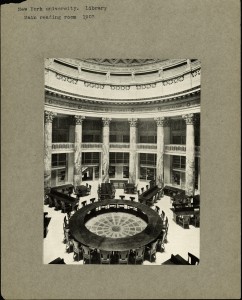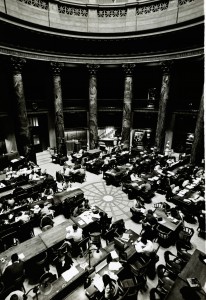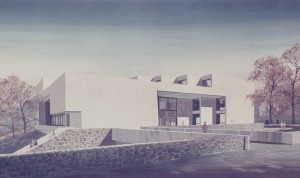The future of Gould Memorial Library became a major topic of discussion during Marcel Breuer’s tenure at NYU. Faculty and students did not think the library fulfilled the needs of a modern academic institution. The building needed more space for studying, stacks, audiovisual collections and equipment such as microfilm readers and projectors. When the library opened in 1900, 300 students attended the Heights. By 1965, approximately 3200 students attended.
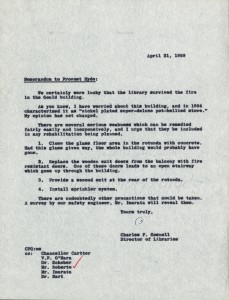
In this 1969 letter, Gosnell characterizes the Gould Memorial Library as a "nickel plated super-deluxe pot bellied stove."
In the 1960s complaints became commonplace. A student editorial published in the Daily Heights newspaper complained of the impractical 19th century style and declared it to be a “cavernous chamber.” Charles Gosnell, the library director at the time agreed whole-heartedly with the criticisms and advocated for a new library.
The administration, with the help of university architect Joseph Roberto, suggested a number of solutions to the library problem. One involved sharing a library with Fordham University, which received negative feedback concerning traveling for students and cooperation between the two institutions. Roberto drew up plans for expanding Gould, but the library’s landmark status made it difficult to proceed with any alterations to the existing structure. The most popular proposal consisted of a new library and the transformation of Gould Memorial Library into a study and lecture center. Construction of a new building never took place though, and after NYU sold the campus in 1973 the problem lay with CUNY.
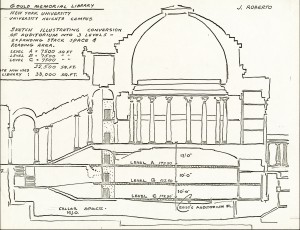
Suggested by Marcel Breuer and Associates, along with Roberto, the auditorium would be split into three levels, and the university would then construct a new auditorium.

